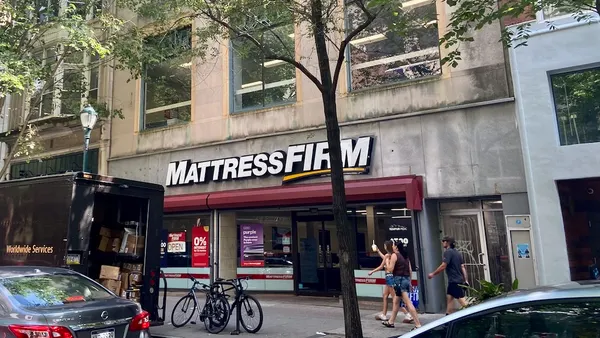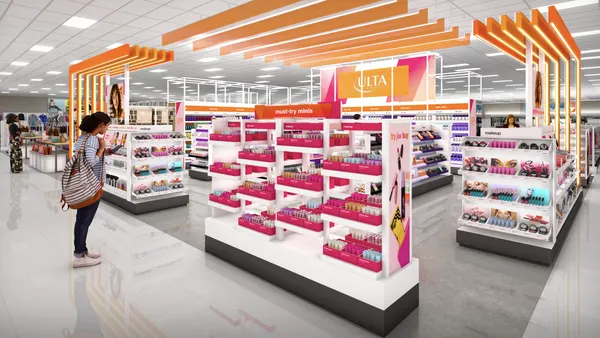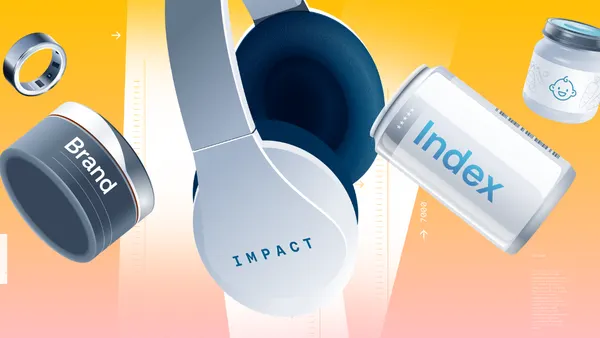Dive Brief:
- The number of retailer mobile apps used by consumers has doubled since last year, from an average of two per phone to four, according to a study by Synchrony.
- In another sign of increased consumer adoption, 67% have downloaded a mobile app from a retailer on their smartphones versus 63% a year ago, the study said. Sixty percent of consumers use the apps for browsing products, 50% for accessing discount coupons and 49% for making purchases. In a strong commendation, 83% are happy with the customer experience provided by retail mobile apps.
- The study also reported that shoppers think mobile payments will replace traditional forms of transactions eventually, but want to hold on to their physical wallets for now. By the year 2025, 60% of U.S. consumers think shoppers will carry a phone but no physical wallet. The integration of digital wallets into retailer apps may spur increased use of both functions.
Dive Insight:
Shoppers may finally be warming up to retailer apps and mobile payments with the kind of enthusiasm they have shown for their phones. On average, they have installed twice the number of apps in this year's Synchrony study than they had last year, and satisfaction for retailer apps' customer experience is now well over three-quarters and headed higher.
But all is not rosy for retailers' mobile apps. Consumers, who are typically faced with limited phone storage, are quick to delete the apps. Thirty-four percent deleted an app to free up storage space; 33% deleted an app after shopping less with a retailer; and 21% deleted an app due to poor experience, although this number declined from 35% last year, noted the Synchrony study. A recent study by Alligatortek confirmed this trend, reporting that 54% of respondents delete apps "at about the same rate that they download them." Alligatortek ranked shopping apps fourth on both its lists of most-downloaded and most-deleted apps.
"Collectively, app use is on an adoption curve not too different from other tech. Lots of folks use a few; few folks use a lot," James Tenser, principal, VSN Strategies, wrote in RetailWire, commenting on the Synchrony study.
But another RetailWire commenter critiqued the significance of app usage growing from two to four. "What increase? Four retail apps a year versus two? Sure, that's a doubling, but off a ridiculously low base," wrote Ryan Mathews, founder and CEO of Black Monk Consulting. Consumers will use shopping apps when they work seamlessly, offer value to consumers, and consumers are satisfied that privacy, data sharing and security are being respected, he added.
Other studies confirmed the progress shopping apps are making. App Annie's Global Retail Report said global downloads of mobile shopping apps grew 20% year-to-year in the first half of 2017.
Synchrony's findings about digital wallets are in line with other recent reports. Nearly 2.1 billion consumers worldwide are expected to use mobile wallets for payments or money transfers by next year, up 30% over last year, according to a study from Juniper Research. But the future of digital wallets may not necessarily be with Apple, Google and Samsung. Katie Jansen, CMO of AppLovin, wrote in Retail Dive that consumers prefer retailer-branded wallets, such as those from Starbucks, Walmart and Target. Starbucks has the most-used mobile payment app, noted eMarketer, followed by Apple Pay, Google Pay and Samsung Pay. Adtech firm Criteo reported that in-app transactions increased 46% in 2017.












